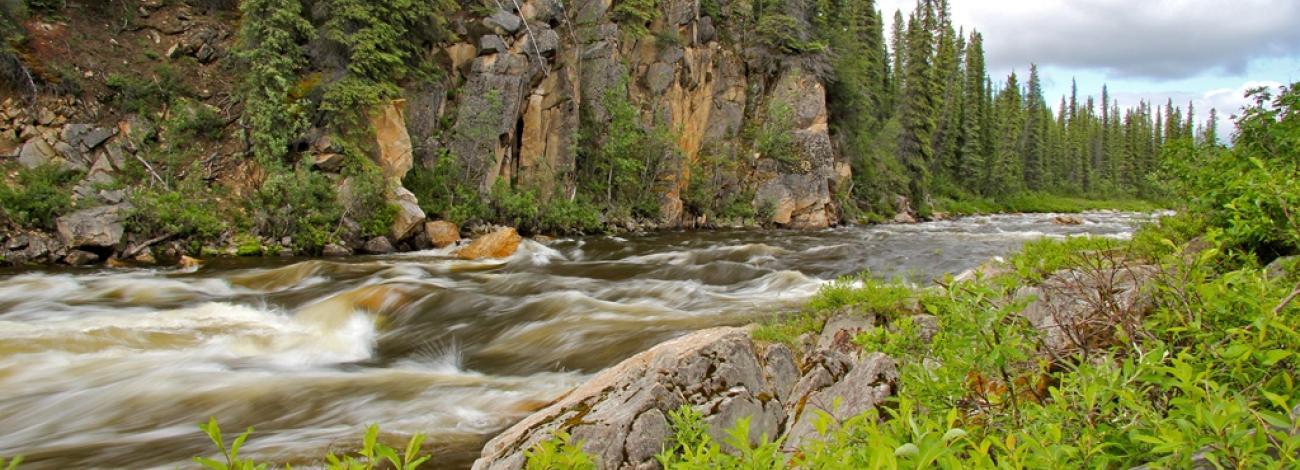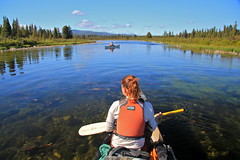
GULKANA WILD AND SCENIC RIVER
The Gulkana River watershed drains approximately 2,140 square miles of Southcentral Alaska. The river begins in the Alaska Range near Summit Lake and flows south into the Copper River, which eventually empties into the Gulf of Alaska between Cordova and Katalla. Several hundred lakes and ponds are scattered throughout the spruce-dominated forest of the Gulkana River watershed, providing abundant nesting areas for trumpeter swans and waterfowl.
Portions of the Gulkana River were designated for its wild character as part of the National Wild and Scenic River system by the Alaska National Interest Lands Conservation Act in 1980. The Gulkana was recognized for its primitive character, abundant fish and wildlife, and its geologic, cultural and recreational values. The river offers excellent sportfishing, particularly for chinook (king) salmon, as well as 3-4 day float trips through meandering waters and Class III – IV rapids with convenient access points along the Richardson Highway. For more information on recreational opportunities, visit the Gulkana Wild and Scenic River Recreation web page.
Outstandingly Remarkable Values
- Fish
-
Fish
The Gulkana is one of the most popular sportfishing rivers in Alaska, providing rich habitat for rainbow trout, arctic grayling, king salmon, red salmon, whitefish, longnose suckers and lamprey. It is the leading king (Chinook) and red (sockeye) salmon-spawning stream in the Copper River basin. Grayling, rainbow trout and steelhead are resident species.
You can purchase an Alaska fishing license and view sportfishing regulations online at the Alaska Department of Fish and Game website or buy in person from license agents throughout the state, including stores in Glennallen, Delta Junction and Tok.
Fishing is particularly heavy on weekends in June and July when the kings are running.
- Recreational
-
Recreational
The Gulkana provides a variety of water-based recreational activities. It is one of a handful of road-accessible rivers in the state of Alaska, yet provides opportunities for remote and primitive experiences, particularly on the West Fork of the Gulkana. While the three forks are not considered whitewater rivers for most of their length, they include rapids rated up to Class III-IV. The corridor provides a remote setting for recreation and subsistence activities, such as boating, fishing, hunting, trapping, camping, hiking, snowmachining, skiing, photography, wildlife viewing and dogsledding. The Sourdough Section is accessible to powerboats.
For more information about recreation opportunities, visit the Gulkana Wild and Scenic River web page.
- Scenic
-
Scenic
Closely flanked by low, rolling hills, with the Wrangell Mountains and Alaska Range in the background, the Gulkana offers high-quality scenic vistas. It offers viewers and photographers opportunities to observe and photograph many aspects of nature—wild flowers, a variety of birds and animals are all present in abundance.
- Wildlife
-
Wildlife
The Gulkana is home to a great diversity of wildlife and provides outstanding viewing opportunities. Depending on location, you may see grizzly bear, black bear, moose, caribou, beaver, coyote, otter, bald eagles, kingfishers, and assorted waterfowl. There are more than 33 species of mammals and 59 species of birds known to live in the Gulkana River basin.

